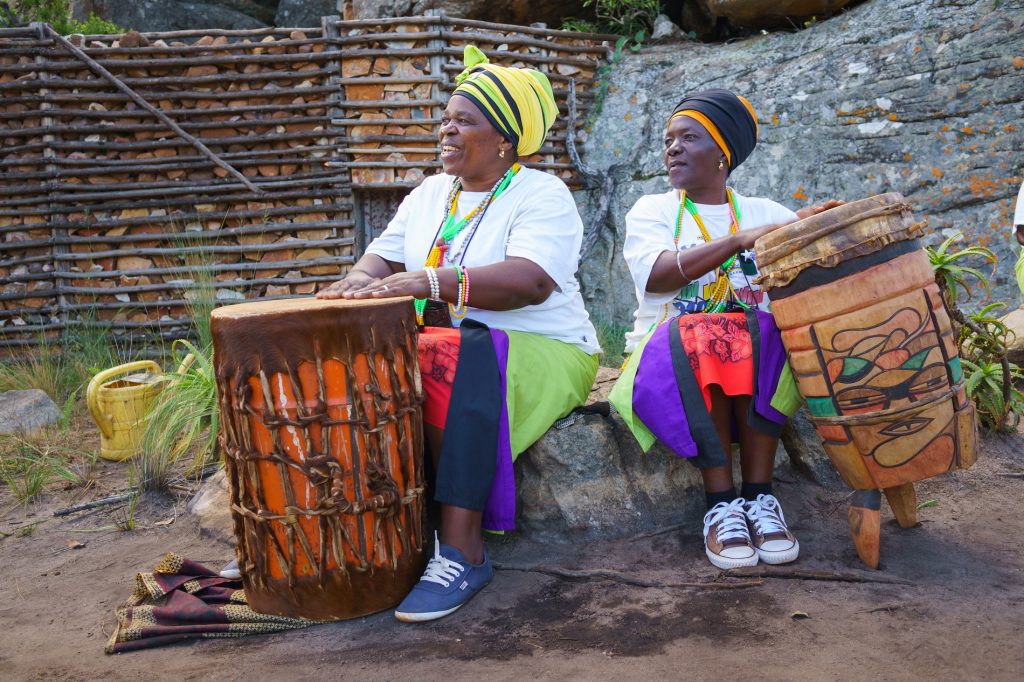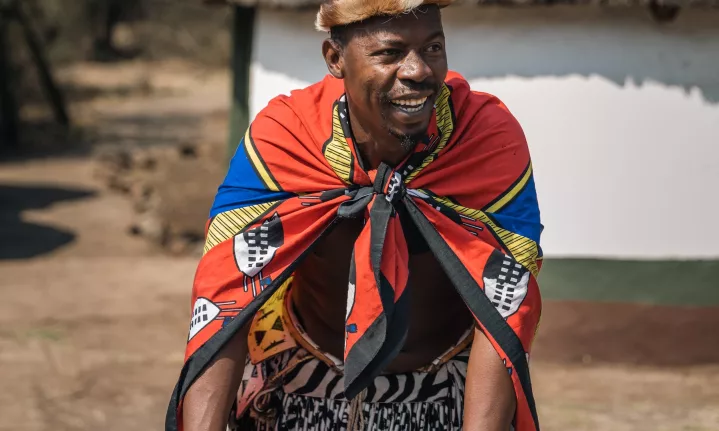The Best Guide To South African Culture Today
The Best Guide To South African Culture Today
Blog Article
The Main Principles Of South African Culture Today
Table of ContentsThe 10-Minute Rule for South African Culture TodaySee This Report about South African Culture TodayGetting My South African Culture Today To WorkThe Facts About South African Culture Today RevealedThe Best Guide To South African Culture TodayNot known Factual Statements About South African Culture Today
This adheres to with singing and drum beating. The new bride and bridegroom after that meet the senior citizens and speak about the significance of their union. An issue of significance in Zambian villages is the passing away of enjoyed ones. All participants of the village put money, time and initiative together for the burial of the deceased.Throughout the mourning duration; guys stay outside your house and the females remain inside the home of the deceased. After chatting about the dead, the village walks to the area of funeral to say their last goodbyes. Music and dance is a really important facet of the Zambian culture. The various tribal systems have their own dancing forms; nevertheless, makishi prevails among all people.
Things about South African Culture Today
When it concerns songs, drums are utilized the most, with a range of drumming ceremonies. In Zambia, bulk of individuals are Christian; Protestant and Roman Catholic. There are little teams of Muslims and Hindus, with the remainder complying with local indigenous tribal beliefs.

South African heritage and culture is tremendously diverse, and consists of various teams of people that each have their own traditions and ideas. Having such a variety of individuals and societies is what makes South Africa so one-of-a-kind. In the real feeling of the phrase, we are a rainbow country.
South Africa has about 3 hundred thousand Portuguese individuals staying in it. Making it the 7th on the listing of countries with one of the most Portuguese people in it outside of Portugal. Portuguese is not just a culture, yet it is additionally a language and a race. Portuguese individuals originate from the nation of Portugal in Europe, nonetheless, due to Portugal (like lots of various other countries in Europe) discovering the world and dominating other countries throughout the 15th 20th centuries, South Africa has what we call Portuguese South African's living in it.
The Best Guide To South African Culture Today
Among the noticeable features of the topography is a plateau that covers virtually two thirds of the facility of the nation. The plateau complex rises toward the southeast, where it climaxes in the Drakensberg array, component of an escarpment that divides the plateau from the seaside areas. The Drakensburg consists of Champagne Castle, the highest height in the country.
The region north of the Witwatersrand, called the bushveld, slopes downward from east to west toward the Limpopo River, which develops the worldwide border. The western section of the plateau, the middleveld, additionally descends towards the west and varies in altitude between the highveld and bushveld. Between the Drakensburg and the eastern and southerly coast, the land comes down to the sea.
Nearer the coast there is a low-lying plain called the eastern lowveld. Southwest of the plateau the nation comes to be progressively a lot more arid, paving the way to the hostile desert of the Great Karroo, approached the east by the lower, much better sprinkled plateau of the Little Karroo. Dividing the dry southerly inside from the sandy littoral of the southern coastline and West Cape is another array, the Langeberg.
South African Culture Today Fundamentals Explained
The country's racially, ethnically, and politically split background has actually produced nationwide and subnational icons that still function as icons of the nation, and others icons that are approved just by certain teams. The monoliths to white inhabitant conquest and political prominence, such as the Afrikaner Voortrekker ("pioneer") Monument in Pretoria and the Rhodes Monolith recognizing the British colonial empire builder and Cape head of state Cecil Rhodes, remain sectarian icons.
The initial modern-day citizens were the San ("bushman") hunter-gatherers and the Khoi from this source ("Hottentot") peoples, who herded livestock (South African culture today). The San might have existed for hundreds of years and left proof of their presence in thousands of ancient cave paints ("rock art"). Bantu-speaking clans that were the ancestors of the Nguni (today's amaZulu, amaXhosa, amaSwazi, and vaTsonga individuals) and Tswana-Sotho language teams (today's Batswana and Southern and Northern Basotho) migrated down from east Africa as early as the fifteenth century

Both previous republics of the Orange Free State and Transvaal (South African Republic) were developed by Afrikaner inhabitants that defeated and dispossessed the Basotho and Batswana. Lesotho would have been forcibly incorporated into the Orange Free State without the extension of British security in 1869. The best unification of the nation arised from the South African War (18991902) between the British and both Afrikaner republics, which lowered the nation to destroy at the beginning of the twentieth century.
Afrikaners traditionally considered themselves the just true South Africans and, while granting complete citizenship to all homeowners of European descent, denied that standing to people of shade till the democratic transition of 1994. British South Africans maintain a sense of social and social link to Great Britain without damaging their Homepage identification as South Africans.
Facts About South African Culture Today Uncovered
The variety and fragmentation within ethnic collections and the balance of tensions between those groups throughout the twentieth century prevented interethnic civil problem. While intergroup stress over resources, privileges, and political dominance remain, those problems are as most likely to match Zulu against Zulu as Zulu versus Xhosa or African against Afrikaner.
From colonial India, British sellers and administrators brought the bent steel decorative roof coverings and slim lace work pillars that still represent the outdoor patios of homes in the areas and cities throughout the nation. Houses of worship add a vital building element even in the tiniest communities. Along with the skyrocketing steeples and classic stonework of Afrikaans Dutch Reformed churches, Anglican churches, synagogues, mosques, and Hindu shrines provide selection to the spiritual building scene.

Butchering and the developing of conventional grain beer are vital in securing the engagement and a good reputation of the forefathers that are considered the guardians of good luck, success, and wellness. Indian communities preserve their native culinary traditions and apply them on Islamic and Hindu routine and ritualistic celebrations. Afrikaners and Coloured individuals collect at weekends and unique celebrations at multifamily bbqs called braais, where neighborhood bonds are strengthened.
Since this was the primary financial business of both black Africans and white homesteaders, dispute between those teams fixated the belongings of grazing land and livestock. In 1867, the largest ruby deposits worldwide were uncovered at Kimberley in the west central location. The wealth from those areas assisted fund the exploitation of the biggest gold reef on the planet, which was found on the Witwatersrand in 1886.
The smart Trick of South African Culture Today That Nobody is Talking About
This resulted in misunderstandings and deliberate misrepresentation in the dealings of white inhabitants and government officials with African chiefs during the colonial period (South African culture today). In the establishment of African books, some facets of common and chiefly "tribal trust" land period were maintained, and even in white country areas, kinds of communal period were still practiced in locations with African areas
After the democratic makeover of 1994, programs for land restitution, redistribution, and reform were instituted, yet development has been sluggish. The white minority still manages eighty percent of the land. Following farming land intrusions in Zimbabwe, the Department of Land Affairs has click to read actually promised to speed up land redistribution.
Report this page